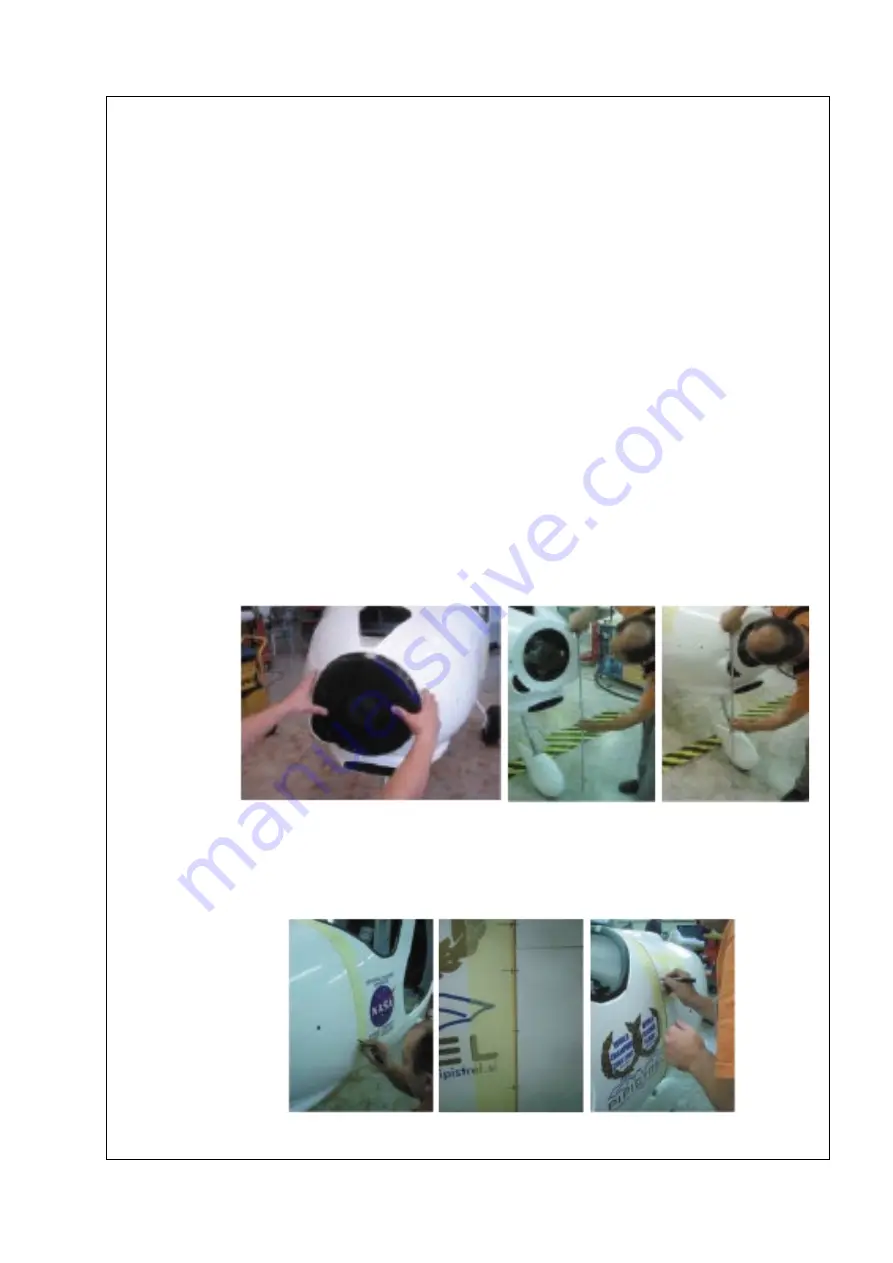
Page
27
of
33
NOTE:
The process explained in step 13 may have to be repeated after later steps.
14. Slide the cowling over the engine and temporarily mount your propeller Push the cowling
over the fuselage`s front edge until gap between the spinner`s back edge and the
cowling`s front face is 10-15 mm (Figure 16-001 green marking).
NOTE:
New engine cowlings are usually too long and need shortening.
15. Make sure it is cantered left to right along the fuselage´s center line and that the spinner
backplate rests right between the lower cowl´s two scoops.
16. Inspect the cowling and spinner from the side. Make sure the spinner´s profile blends into
the cowling’s profile.
NOTE:
Other tests to ensure the proper orientation of the cowlings:
17. Measure the distance between cowling´s halfway seam and the floor on both sides of the
propeller. Rotate the cowling´s so that the distance is the same.
18. Check cowling´s halfway seam position regards to the inserts (marked in step 9)) on
each side of the fuselage. Rotate the fuselage so that there is at least 20 mm distance
between each insert hole and the cowling´s halfway seam (Figure 16-001 pink marking).
If 20 mm goal cannot be met, try setting the cowling´s halfway seam in the middle of the
inserts.
Figure: 16-004: Cowling’s orientation tests.
19. When the orientation of the cowling is adequate tape it to the fuselage using masking
tape.
Figure: 16-005: Marking the cowling to fuselage orientation.
































